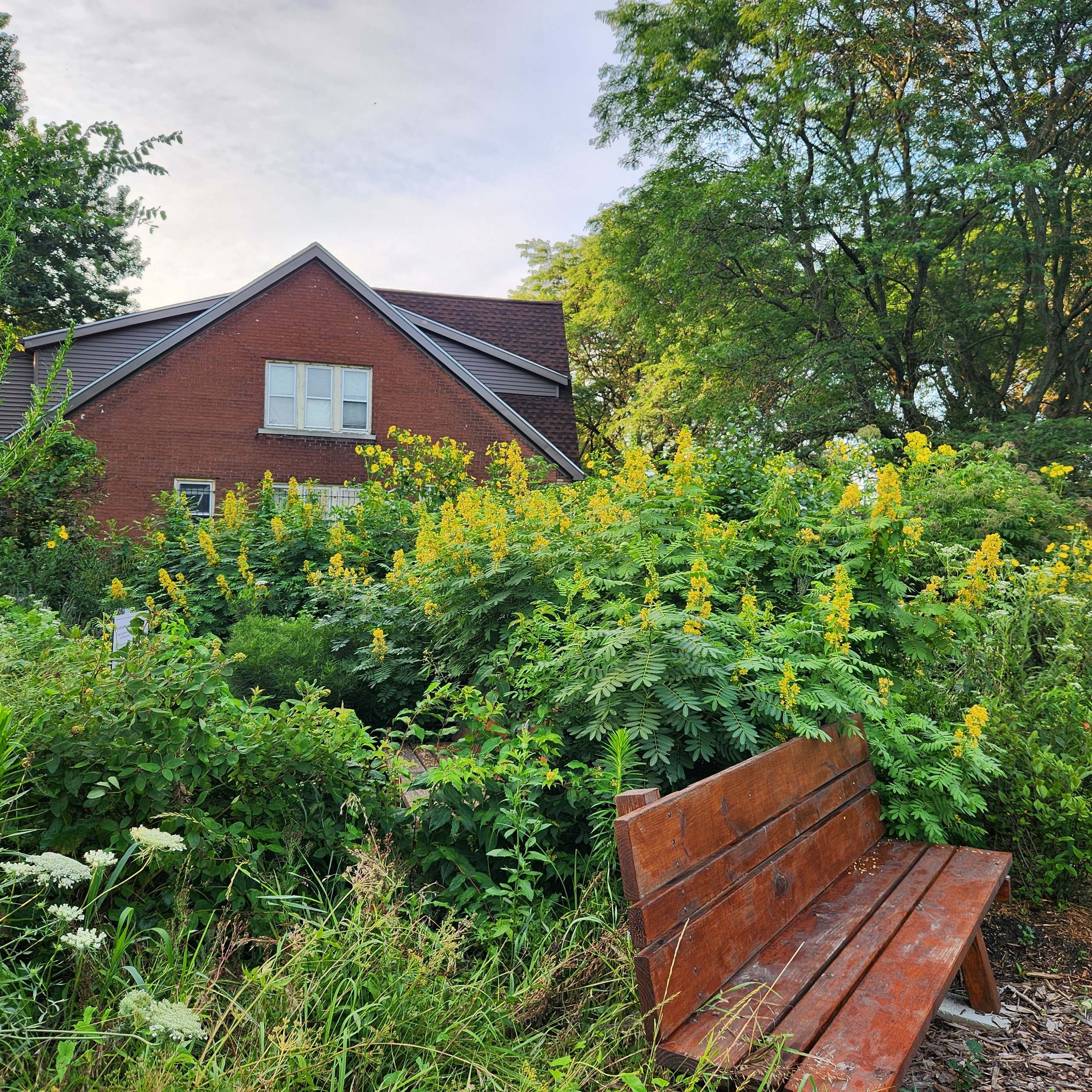Senna hebecarpa, Wild Senna, Quart pot
Senna hebecarpa, Wild Senna
FS-PS, Zone 4, Blooms Aug.-Sept., 5’ x 2-2.5’, medium wet to medium.
Wild Senna is a versatile plant and the host plant for the Sulphur Butterfly! Its lovely, bright yellow flowers bloom July-August, attracting many bees and butterflies. Autumn brings beautiful leaf colors and the formation of long black pods with seeds favored by larger birds like wild turkeys (we had a female wild turkey visit our gardens for several days last summer). A horizontal root system provides strength against winds, allowing the plant's stately (4-6') beauty to be appreciated even after a storm. Some gardeners use this sun-loving plant to form a hedge. Its close relative, Senna herbecarpa, is also commonly referred to as Wild Senna, so this can be a point of confusion. It’s native to central and eastern U.S., but not Michigan.
Five types of Sulphur Butterflies use Wild Senna as a Host Plant including the Cloudless Sulphur. The plant does not produce nectar. Bumble bees buzz-pollinate the flowers for their pollen.
Check out this 2 minute Deep Look from NPR, prepare to be amazed! https://www.pbs.org/video/deep-look-bumblebee/
Senna hebecarpa, Wild Senna
FS-PS, Zone 4, Blooms Aug.-Sept., 5’ x 2-2.5’, medium wet to medium.
Wild Senna is a versatile plant and the host plant for the Sulphur Butterfly! Its lovely, bright yellow flowers bloom July-August, attracting many bees and butterflies. Autumn brings beautiful leaf colors and the formation of long black pods with seeds favored by larger birds like wild turkeys (we had a female wild turkey visit our gardens for several days last summer). A horizontal root system provides strength against winds, allowing the plant's stately (4-6') beauty to be appreciated even after a storm. Some gardeners use this sun-loving plant to form a hedge. Its close relative, Senna herbecarpa, is also commonly referred to as Wild Senna, so this can be a point of confusion. It’s native to central and eastern U.S., but not Michigan.
Five types of Sulphur Butterflies use Wild Senna as a Host Plant including the Cloudless Sulphur. The plant does not produce nectar. Bumble bees buzz-pollinate the flowers for their pollen.
Check out this 2 minute Deep Look from NPR, prepare to be amazed! https://www.pbs.org/video/deep-look-bumblebee/
Senna hebecarpa, Wild Senna
FS-PS, Zone 4, Blooms Aug.-Sept., 5’ x 2-2.5’, medium wet to medium.
Wild Senna is a versatile plant and the host plant for the Sulphur Butterfly! Its lovely, bright yellow flowers bloom July-August, attracting many bees and butterflies. Autumn brings beautiful leaf colors and the formation of long black pods with seeds favored by larger birds like wild turkeys (we had a female wild turkey visit our gardens for several days last summer). A horizontal root system provides strength against winds, allowing the plant's stately (4-6') beauty to be appreciated even after a storm. Some gardeners use this sun-loving plant to form a hedge. Its close relative, Senna herbecarpa, is also commonly referred to as Wild Senna, so this can be a point of confusion. It’s native to central and eastern U.S., but not Michigan.
Five types of Sulphur Butterflies use Wild Senna as a Host Plant including the Cloudless Sulphur. The plant does not produce nectar. Bumble bees buzz-pollinate the flowers for their pollen.
Check out this 2 minute Deep Look from NPR, prepare to be amazed! https://www.pbs.org/video/deep-look-bumblebee/






